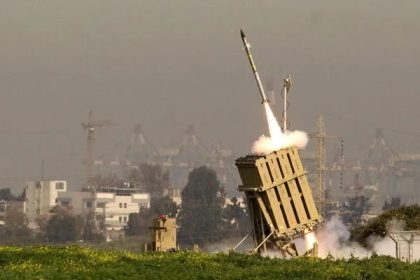A wave of ballistic missile strikes launched by Iran on Friday targeted several locations across Israel, including Tel Aviv’s Kirya district, home to the Israeli Ministry of Defence and the military’s central command.
Tribune Online reports that Israel initially launched a wave of attacks targeting top Iranian officials, which killed several senior figures, including the head of Iran’s Islamic Revolutionary Guards Corps (IRGC), Hossein Salami.
The retaliatory attack by Iran, which left parts of central Israel visibly damaged and resulted in civilian casualties, has renewed global scrutiny of the reliability of Israel’s highly praised air defence system — the Iron Dome.
The strikes were in retaliation for Israel’s recent deep-strike operation into Iranian territory, where jets and drones were deployed against nuclear and military infrastructure.
In this article, Tribune Online takes a look at what you should know about the Iron Dome and possible reasons it was penetrated by Iran’s missile strikes.
1. Central to Israel’s Missile Defence Strategy
The Iron Dome, known in Hebrew as Kippat Barzel, is considered one of Israel’s most crucial defensive systems, designed specifically to counter short-range rocket and missile threats.
2. Works by Intercepting Rockets Mid-Air
This mobile, all-weather system detects and tracks incoming threats using radar. If a projectile is calculated to hit a populated or strategic area, the system launches a Tamir interceptor missile to neutralise it before impact.

3. Became Operational in 2011
The Iron Dome became fully operational in March 2011 and has since undergone multiple upgrades. According to the Israeli Ministry of Defence, the system has stopped countless rockets from reaching civilian areas.
ALSO READ: ‘We will hit every site’, Netanyahu issues fresh threats to Iran
4. Developed by Israel with U.S. Support
Developed by Rafael Advanced Defense Systems, a state-owned Israeli firm, the Iron Dome has received substantial funding and backing from the United States. Washington continues to support its development and maintenance.
5. Composed of Multiple Batteries
There are an estimated 10 Iron Dome batteries spread across Israel, each capable of defending roughly 60 square miles. A typical battery includes three to four launchers, each carrying up to 20 Tamir interceptors.
6. Only Responds to Certain Threats
The system is programmed to ignore rockets projected to land in open or uninhabited areas, preserving its interceptors for those posing real danger to lives or infrastructure.
Possible Reasons for Breaches
1. Saturation Attack
Analysts have long pointed out that the Iron Dome, while highly effective, is not foolproof. According to the Center for European Policy Analysis, a U.S. think tank, a well-coordinated barrage or “saturation attack” where dozens of missiles are launched at once can overwhelm its defences, allowing some projectiles to pass through.
2. Targeting of Weaker Coverage Zones
Iranian forces could have deliberately aimed at areas with lower Iron Dome coverage or where the system’s radar performance is limited, making interception more difficult.
3. Advanced Missile Technology
The missiles launched may have included upgraded features such as manoeuvrable re-entry vehicles or enhanced guidance systems, making them harder to track and intercept.
ALSO READ TOP STORIES FROM NIGERIAN TRIBUNE